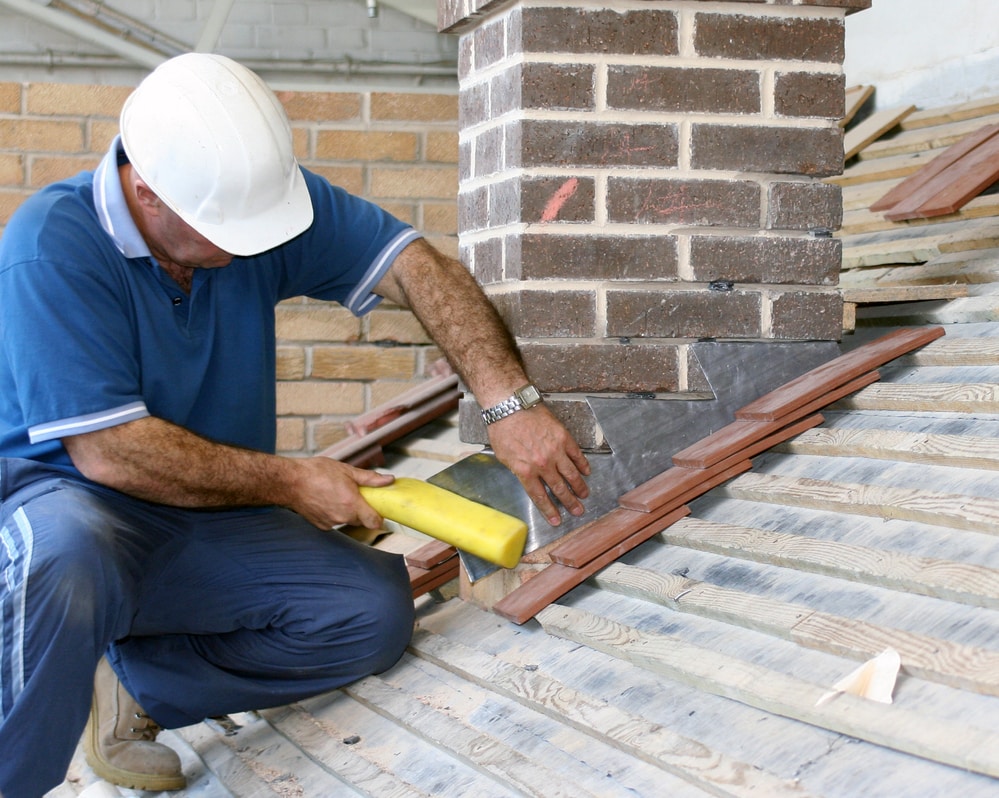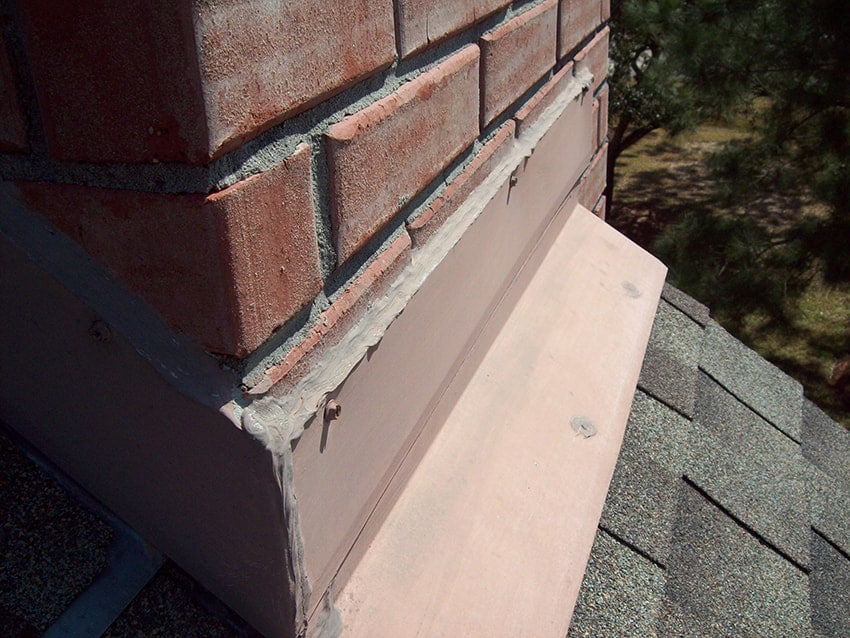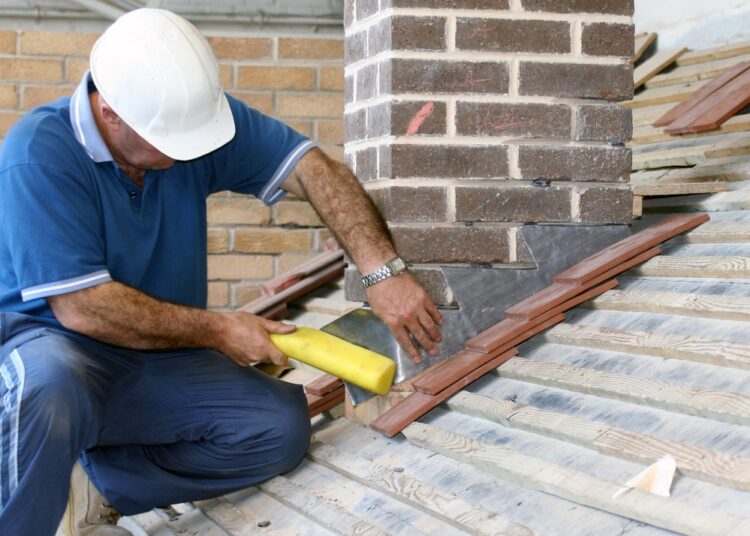Embark on a journey through the world of roof flashing repair services, where expertise meets innovation to deliver a comprehensive guide that guarantees a fulfilling reading experience.
Delve into the nuances of different roof flashing materials, the common causes of damage, signs to watch out for, DIY repair techniques, and the key factors to consider when hiring professional services.
Types of Roof Flashing
Roof flashing is a crucial component of any roofing system, as it helps to prevent water leakage and damage. There are several types of roof flashing materials available, each suited for different roof styles and installation methods.
Metal Flashing
Metal flashing, such as aluminum or galvanized steel, is a popular choice due to its durability and weather resistance. It is commonly used in valleys, around chimneys, and along roof edges. Metal flashing is installed by bending and shaping the material to fit the specific area it is covering.
Repairs can be done by resealing seams or replacing damaged sections.
Lead Flashing
Lead flashing is another common material known for its pliability and long lifespan. It is often used in areas prone to extreme weather conditions, such as around skylights and vent pipes. Lead flashing is installed by cutting and shaping the material to form a watertight seal.
Repairs typically involve patching holes or replacing sections that have deteriorated.
PVC Flashing
PVC flashing is a more flexible and lightweight option, making it easier to install in hard-to-reach areas. It is commonly used around windows, doors, and other openings. PVC flashing is installed by securing it in place with adhesives or fasteners.
Repairs usually involve resealing seams or replacing damaged sections.
Rubber Flashing
Rubber flashing, also known as EPDM flashing, is a synthetic material that offers excellent resistance to UV rays and extreme temperatures. It is often used in flat roof applications and around vents and pipes. Rubber flashing is installed by adhering it to the roof surface with roofing cement or adhesive.
Repairs can be done by applying patching material or sealant to damaged areas.Each type of roof flashing has its own unique advantages and installation methods, so it is important to choose the right material based on the specific needs of your roof.
Regular maintenance and timely repairs can help prolong the lifespan of your roof flashing and protect your home from water damage.
Common Causes of Roof Flashing Damage
Roof flashing damage can occur due to various reasons, impacting the overall integrity of the roof. Let's explore some common causes of roof flashing damage below.
Impact of Weather Conditions
Weather conditions play a significant role in the deterioration of roof flashing. Exposure to rain, snow, hail, and UV rays can cause the flashing material to degrade over time. Constant expansion and contraction from temperature changes also weaken the flashing, leading to cracks and leaks.
Age and Poor Installation
As roof flashing ages, it becomes more susceptible to damage. Over time, the flashing material may corrode, rust, or warp, compromising its ability to seal gaps effectively. Poor installation practices, such as improper sealing or fastening, can also contribute to premature flashing failure.
These issues can result in water infiltration and structural damage if not addressed promptly.
Signs of Roof Flashing Problems
When it comes to roof flashing problems, there are several visible signs that homeowners should be aware of to prevent further damage to their roofs. Detecting these signs early can help in addressing the issues promptly and avoiding costly repairs down the line.Some common signs indicating roof flashing problems include:
Water Stains on Ceilings or Walls
- Water stains on ceilings or walls are a clear indication of water penetration, often caused by faulty roof flashing.
- These stains may appear as yellow or brown discoloration, indicating ongoing leaks.
Dripping Water Inside the House
- Dripping water inside the house during rainstorms is a direct sign of water infiltration through damaged roof flashing.
- This can lead to not only structural damage but also mold growth if left unattended.
Visible Rust or Corrosion on Flashing Material
- Rust or corrosion on the flashing material is a sign of deterioration, weakening the barrier against water intrusion.
- Inspecting the flashing for any signs of rust or corrosion can help identify potential problems early on.
Loose or Missing Flashing
- Loose or missing flashing around roof penetrations, such as chimneys or vents, can allow water to seep into the roof system.
- Regularly checking for loose or missing flashing and addressing them promptly is essential in maintaining a watertight roof.
DIY Roof Flashing Repair Techniques

When it comes to DIY roof flashing repairs, it's important to follow proper steps and take necessary safety precautions. Repairing roof flashing on your own can save you money, but it's essential to know when to tackle the job yourself and when to hire professional services.
Step-by-Step Guide for DIY Roof Flashing Repairs
- Start by inspecting the flashing for any visible damage or signs of wear and tear.
- Clean the area around the damaged flashing to ensure a proper seal when applying new flashing.
- Remove the old flashing carefully, making sure not to damage the surrounding roofing materials.
- Cut the new flashing to the appropriate size and shape to fit the area that needs repair.
- Apply roofing cement or sealant to the edges of the new flashing before securing it in place.
- Secure the new flashing in place using nails or screws, making sure it is tightly sealed against the roof surface.
- Inspect the repaired area to ensure there are no gaps or gaps in the flashing that could lead to future leaks.
Safety Precautions for DIY Roof Flashing Repairs
- Always wear appropriate safety gear, including gloves, goggles, and a mask to protect yourself from debris and fumes.
- Use a sturdy ladder and have someone assist you when working at heights to prevent accidents.
- Avoid working on the roof during wet or windy weather conditions to reduce the risk of slipping or falling.
- Be cautious around electrical wires or equipment on the roof and ensure they are properly insulated and secured.
When to DIY Repair versus Hiring Professional Services
- If the damage to the roof flashing is minor and you have some experience with DIY home repairs, you may be able to tackle the job yourself.
- However, if the damage is extensive, or if you are unsure of how to properly repair the flashing, it's best to hire a professional roofing contractor.
- Professional roofers have the expertise and tools needed to handle complex flashing repairs safely and effectively.
Hiring Professional Roof Flashing Repair Services

When it comes to roof flashing repair, hiring professional services can make a significant difference in the quality and longevity of the repair work. Professional roofing companies have the expertise, experience, and tools necessary to ensure that your roof flashing is repaired correctly and effectively.
Compare Different Roofing Companies
Before selecting a roofing company for your roof flashing repair, it's essential to compare different options available in your area. Look for companies with a solid reputation, positive reviews from past customers, and a proven track record of successful roof flashing repairs.
Importance of Certifications and Experience
When choosing a repair service for your roof flashing, make sure to consider the certifications and experience of the roofing company. Certified professionals are trained to handle roof flashing repairs efficiently and safely. Additionally, experienced roofers are more likely to provide high-quality work that meets industry standards.
Tips for Ensuring Reliable Service
- Get multiple quotes from different roofing companies to compare pricing and services offered.
- Ask for references from past customers to gauge the quality of work and customer satisfaction.
- Inquire about the materials and techniques the roofing company uses for roof flashing repairs.
- Ensure that the roofing company is licensed, insured, and offers warranties on their repair work.
- Communicate clearly with the roofing company about your expectations and ask any questions you may have before starting the repair process.
Final Wrap-Up

In conclusion, roof flashing repair services stand as a crucial aspect of maintaining a sturdy roof. Armed with the knowledge shared here, you are well-equipped to tackle any flashing issues that may arise, ensuring a secure and long-lasting roofing solution.







